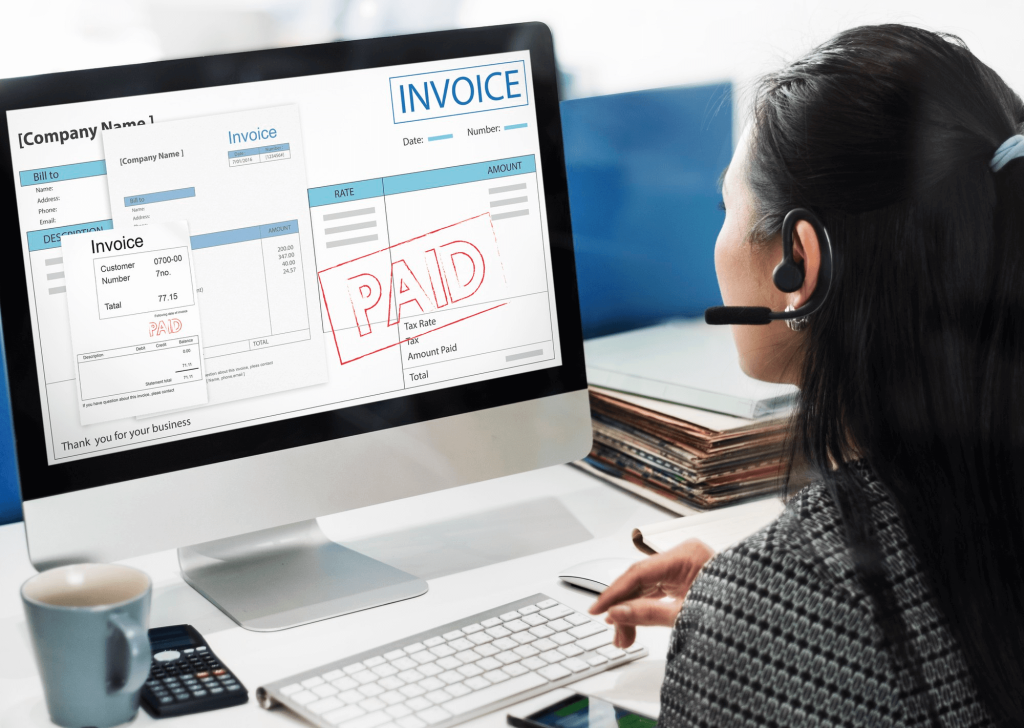If your business had an aggregate turnover of more than INR 10 crores in any preceding FY from 2017–18 onward, you must generate electronic invoices for all B2B transactions under the GST law.
In this article, we help you with all the information you will need about e-invoicing for your business.
Key takeaways
What is e-invoicing?
What is e-invoicing under GST?
What was the system like before e-invoicing?
Who is it for?
What transactions fall under e-invoicing?
What are the required documents?
What are the advantages of issuing an e-invoice?
Who is exempt from e-invoicing?
How to get an e-invoice?
What is e-invoicing?
Simply put, an e-invoice or electronic invoice is the digital version of conventional paper invoices. It possesses all the same features as a paper invoice, including being sent and stored digitally while being legally equivalent.
What is e-invoicing under GST?
E-invoicing under GST refers to a system in which all B2B invoices are electronically uploaded and authenticated by the designated portal, following the guidelines set by the GST Council. With this method in place, businesses will submit invoices to the GST portal in a uniform format.
The GST Council modified the draft e-invoice that the government released for public review in August 2019 to make it compliant with their regulations. Because it is used in all industries, the standard format makes compliance easier and makes sure that GST ecosystems can work together.
What was the system like before e-invoicing?
Before e-invoicing, the seller would make an invoice and send it to two different systems: the GST Portal and e-Way Bill.
Invoices were created in various programs, and the details of each invoice were entered by the taxpayer into the GSTR-1 return via an appropriate API. Another document, the GSTR-2A, used to contain the same data and was shared with the recipients with “view only” permission. In the same way, carriers must make the e-Way Bill, either from scratch or by manually importing invoices into a JSON or Excel file.
It was necessary to put an end to this endless trail of paperwork. The new return system came as a respite from the age-old system.
Who is it for?
The GST Council initially started e-invoicing in a phased manner. The intention was to ensure that businesses had enough time to adapt to the new system. Initially, e-invoicing was only used by companies with annual revenues exceeding Rs 500 crore. However, from October 1, 2022, onward, all companies with a revenue of more than Rs 10 crore are mandated by law to switch to e-invoicing.
Companies with annual sales below the minimum threshold are currently exempt from the requirement to switch to e-invoicing.
What transactions fall under e-invoicing?
All transactions falling under the purview of Section 9(3) of the CGST Act, including but not limited to sales between businesses, sales to the government, exports, deemed exports, supplies to SEZs (with or without tax payment), stock transfers, or supplies of services to separate persons, SEZ developers, and supplies under reverse charge, fall under e-invoicing.
What are the required documents?
You need tax invoices, credit notes, and debit notes under Section 34 of the CGST Act.
What are the advantages of issuing an e-invoice?
- Real-time tracking
- Faster communication between parties
- A rise in profits and a decrease in expenses
- Streamlining operations and enhancing the administration
- Meet a partner’s need or commitment
Who is exempt from e-invoicing?
As notified in CBIC Notification No. 13/2020, the following categories of individuals, irrespective of their turnover, are exempt from e-invoicing:
1) An insurer, a banking company, or a financial institution, including an NBFC
2) A Goods Transport Agency (GTA)
3) A registered person supplying passenger transportation services
4) A registered person supplying services by way of admission to the exhibition of cinematographic films in multiplex services
5) An SEZ unit (excluded via CBIC Notification No. 61/2020, Central Tax)
6) A government department and local authority (excluded via CBIC Notification No. 23/2021, Central Tax)
7) Persons registered in terms of Rule 14 of the CGST Rules (OIDAR)
How to get an e-invoice?
These stages are involved in generating an e-invoice:
- The taxpayer is responsible for ensuring that the reconfigured ERP system is used in a manner compliant with PEPPOL standards.
- Generate a unique Invoice Reference Number (IRN) using a standard hash-generation algorithm or the IRP system of government will generate it.
- Upload JSON file for each B2B invoice along with the IRN on the Invoice Registration Portal (IRP).
- If a supplier uploads a file with a generated hash or IRN in JSON format, the IRP will authenticate it against the GST central registry to make sure it hasn’t already been used.
- After authentication, the invoice will be modified to include a QR code and IRP’s digital signature on the invoice data.
- The uploaded e-invoice data is shared with the E-way bill and GST system.
- The portal will send back the digitally signed JSON, along with the IRN and QR code, to the seller. Payment confirmation and an invoice will be sent to the buyer’s registered email address.
Alternatively, you can also sign up for UpScale’s e-invoicing solution that comes with powerful features like bulk IRN generation and sending E-invoices to IRP in just a click.
In conclusion
Generating a GST e-invoice has its own benefits. When compared to manual data entry, the accuracy and consistency gains from using e-invoices are substantial. It also allows interoperability across businesses. These invoices can be tracked in real-time.
All information pertaining to a given transaction will be readily available online. Regular inspections and polls wouldn’t be necessary any longer. Input credit and output tax comparisons help identify discrepancies in data.
If you are still confused and unable to generate a e-invoice, UpScale by CredAble we’ve got you covered. Click here to land on the right page and start generating e-invoicing with just a few clicks.
